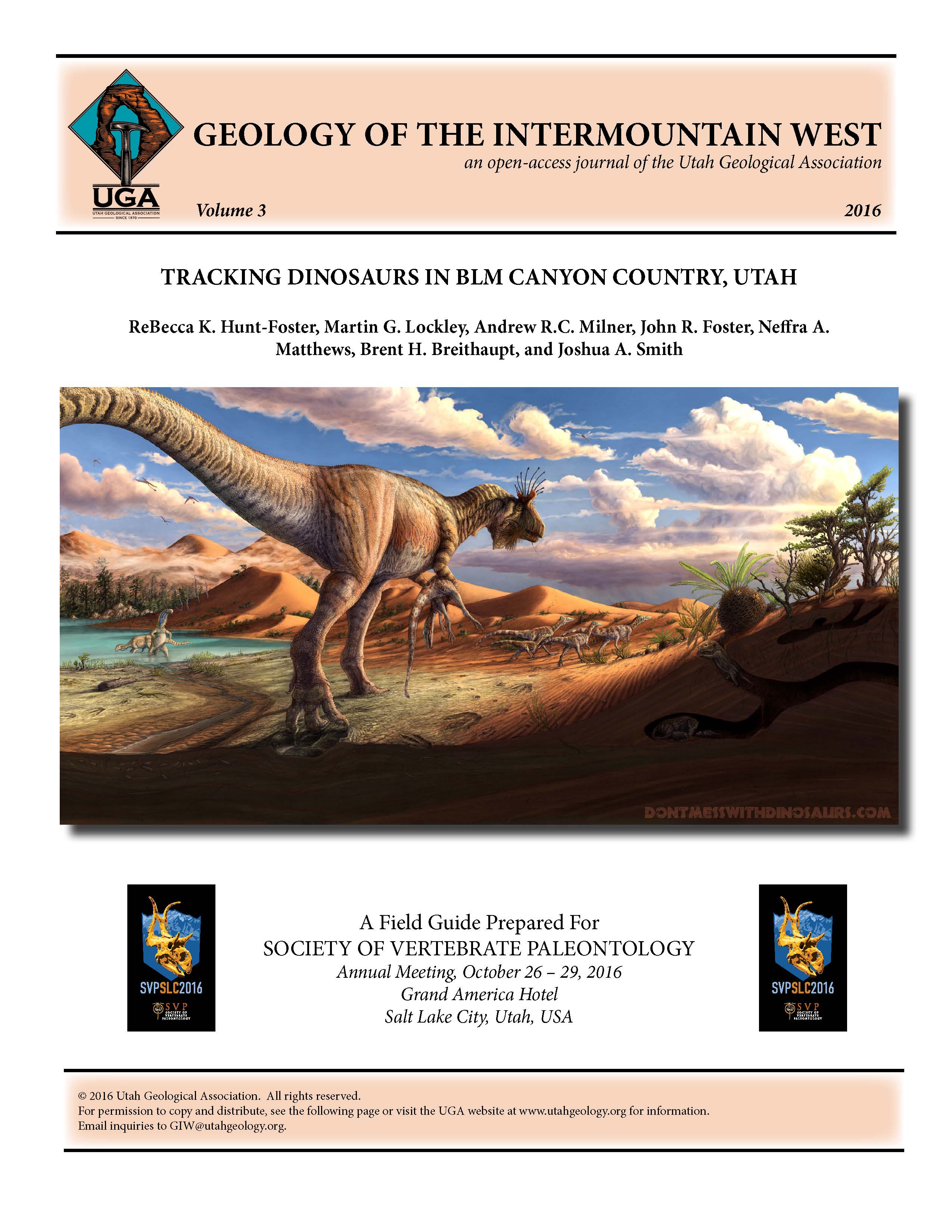Tracking dinosaurs in BLM canyon country, Utah
Abstract
Although only recognized as a discrete stratigraphic unit since 1944, the Cedar Mountain Formation represents tens of millions of years of geological and biological history on the central Colorado Plateau. This field guide represents an attempt to pull together the results of recent research on the lithostratigraphy, chronostratigraphy, sequence stratigraphy, chemostratigraphy, and biostratigraphy of these medial Mesozoic strata that document the dynamic and complex geological history of this region. Additionally, these data provide a framework by which to examine the history of terrestrial faunas during the final breakup of Pangaea. In fact, the medial Mesozoic faunal record of eastern Utah should be considered a keystone in understanding the history of life across the northern hemisphere. Following a period of erosion and sediment bypass spanning the Jurassic–Cretaceous boundary, sedimentation across the quiescent Colorado Plateau began during the Early Cretaceous. Thickening of these basal Cretaceous strata across the northern Paradox Basin indicate that salt tectonics may have been the predominant control on deposition in this region leading to the local preservation of fossiliferous strata, while sediment bypass continued elsewhere. Thickening of overlying Aptian strata west across the San Rafael Swell provides direct evidence of the earliest development of a foreland basin with Sevier thrusting that postdates geochemical evidence for the initial development of a rain shadow.

Copyright (c) 2016 Utah Geological Association

This work is licensed under a Creative Commons Attribution 4.0 International License.




